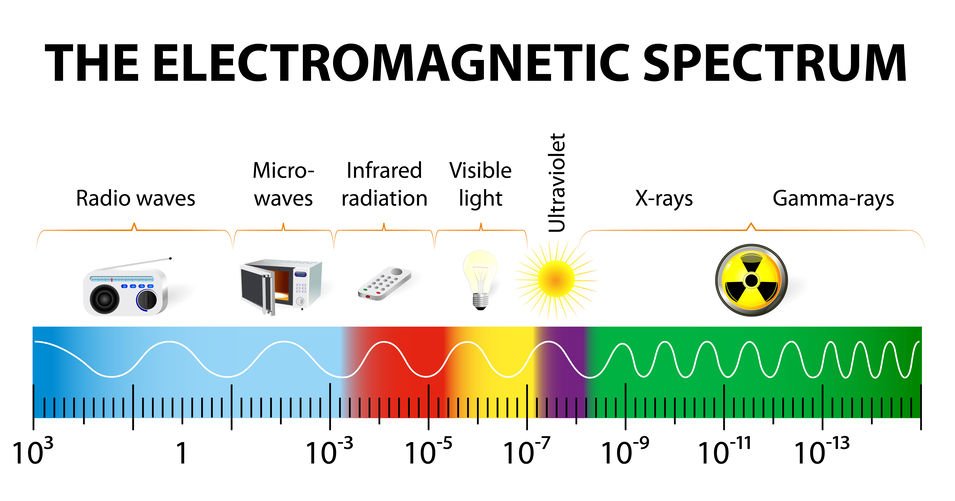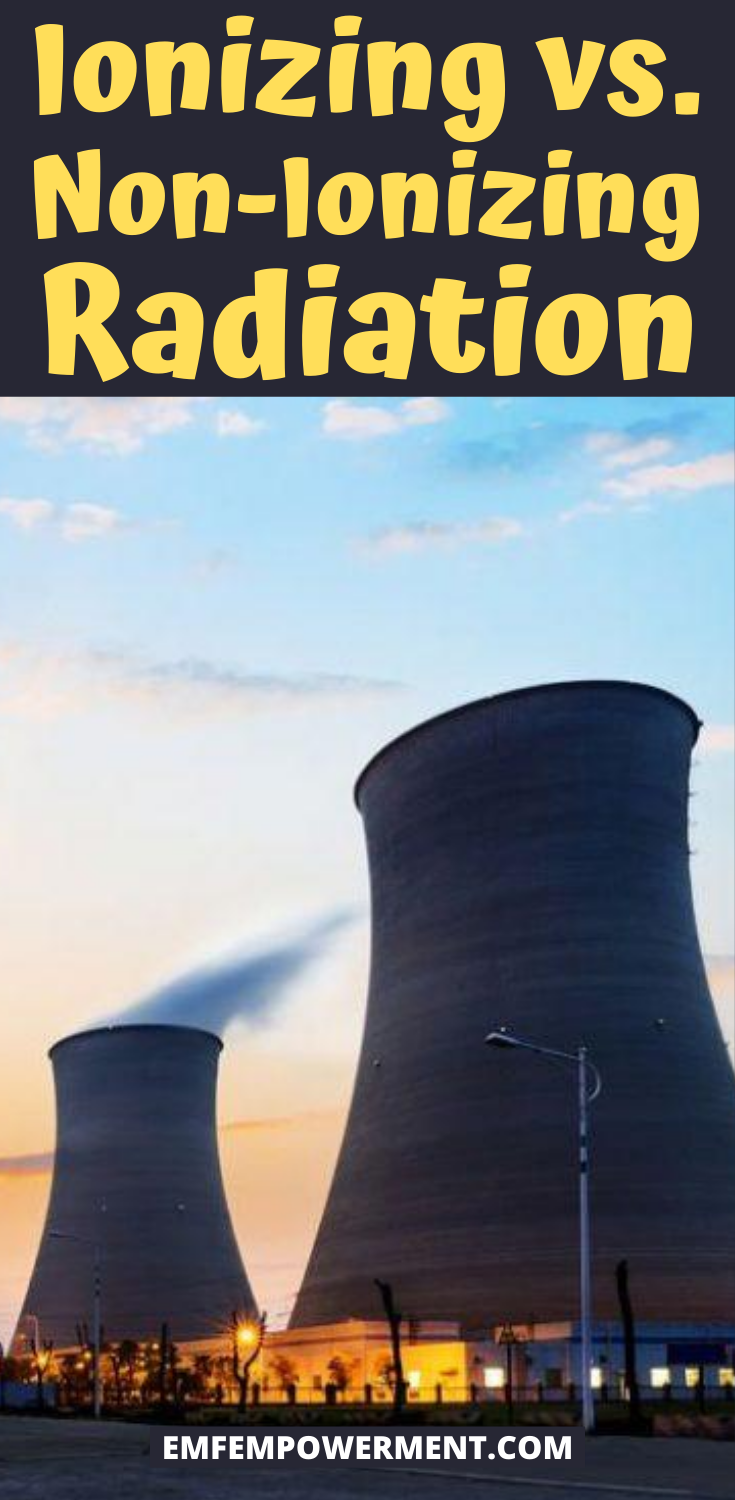On April 3, 1973, the first mobile phone was created. Since then, cell phone technology has…
The Difference Between Ionizing and Non-Ionizing Radiation

*We may earn a commission for purchases made using our links. Please see our disclosure to learn more.
You may have heard the words “ionizing” and “non-ionizing” thrown around in reference to radiation. And while they are both forms of radiation, they fall on opposite sides of the electromagnetic spectrum. This causes them to have different properties, and therefore different effects on the body. Ionizing radiation, for example, is generally regarded as harmful and carcinogenic while there is some debate over the safety of non-ionizing radiation. So what’s the difference between the two?
Let’s take a closer look at both ionizing and non-ionizing radiation, as well as their potential health effects. We’ll also discuss what the research says about both.
Electromagnetic spectrum

First, it’s helpful to understand where each type of radiation falls on the electromagnetic spectrum. In the middle of the spectrum is visible light. On one side of it, you have ionizing radiation. On the other, you have non-ionizing radiation.
Ionizing radiation produces waves that are much closer together than the slow non-ionizing waves. This means that ionizing radiation has more energy than non-ionizing radiation. In fact, this is the primary difference between the two: ionizing radiation possesses enough energy to split a cell, and non-ionizing does not.
Ionizing radiation
Ionizing radiation is produced by medical devices such as CT scans and X-rays. It’s also utilized in radiation therapy for cancer patients, and in radiopharmaceuticals. Outside of the medical industry, ionizing radiation is created by atomic bombs and nuclear power plants. It’s also found in nature, in certain radioactive elements such as radium and uranium, and in sunlight.
There are three different types of ionizing radiation. Ultraviolet waves fall closest to visible light on the electromagnetic spectrum. These waves are considered the least harmful of all ionizing radiation, and they are produced by the sun. Moving further down the spectrum, next is x-ray radiation. And at the very end are gamma rays, which are produced by nuclear energy.
To learn more about ionizing radiation, see this video from the CDC:
Side effects of exposure
When ionizing radiation comes into contact with cells in the body, it can do one of two things. In some circumstances, it can cause direct damage to DNA molecules, altering the way they replicate or killing them entirely. It can also cause indirect damage, by splitting water molecules within the body. The molecules become unstable, turning into free radicals. Free radicals travel the body, searching for molecules to bind to in order to become stable.
Regardless of whether the damage is direct or indirect, it can have some serious consequences. Too much ionizing radiation exposure has been tied to cancer, skin burns, radiation poisoning, and even death. In just the right amounts, however, ionizing radiation can have huge medical benefits, particularly for those needing imaging tests or cancer treatment.
That’s not to say that those medical tests don’t come without risks. It is possible, especially if you find yourself receiving ionizing imaging tests often, that you may have an increased risk for cancer later in life. The best way to protect yourself from this is to receive these types of imaging scans and treatments only when absolutely medically necessary.
Non-ionizing radiation
Non-ionizing radiation is produced by electricity, cell phones, microwaves, WiFi and Bluetooth signals, infrared scanners, and communications devices. It can also be found in nature — nearly half of the radiation produced from sunlight, for example, is actually non-ionizing infrared radiation.
Non-ionizing radiation can also be broken down into a few types. Closest to visible light on the electromagnetic spectrum is infrared light. In addition to sunlight, infrared radiation is also used in many military and law enforcement devices. Moving down the spectrum, next are microwaves. These waves are produced by microwave ovens as well as by radar. Radiowaves are next, generated by cell phones, WiFi, radios, televisions, and most anything else that produces a communications signal. Finally, at the far end of the non-ionizing side of the spectrum, is extremely-low frequency radiation. ELFs are produced by power lines and AM antennas.
Side effects of exposure
The side effects of exposure to non-ionizing radiation are long debated. Some believe that because non-ionizing radiation lacks the energy necessary to cause changes at the cellular level, there are no real risks to small amounts of exposure, even over a long period of time.
There is some evidence, however, to indicate otherwise. The World Health Organization’s International Association for Research on Cancer (IARC) recognizes RF and ELF-EMF radiation as possibly carcinogenic. This is because RF-EMF radiation has been tied to heart and brain tumors in rats who were exposed to cell phones, while the ELF-EMF radiation produced by power lines has been linked to childhood leukemia. It’s also worth noting that the IARC classifies lead as “possibly carcinogenic”, as well.
In addition to increasing a person’s risk of developing certain forms of cancer, certain types of non-ionizing radiation exposure have been tied to male infertility, miscarriages, and Electromagnetic Hypersensitivity (EHS). EHS is categorized by a host of unpleasant symptoms, including depression, dizziness, nausea, itchiness, redness, and irritability.
Final thoughts
Non-ionizing and ionizing radiation are two distinctly different things. While they share some common properties — mainly, they are both on the electromagnetic spectrum — they behave differently and, ultimately, cause a different impact on the body. Both forms of radiation are worth being cautious and wary of.
To cut down on your ionizing radiation exposure, limit unnecessary medical imaging tests and procedures. To reduce your non-ionizing radiation exposure, see our guide to whole-house protection. 



